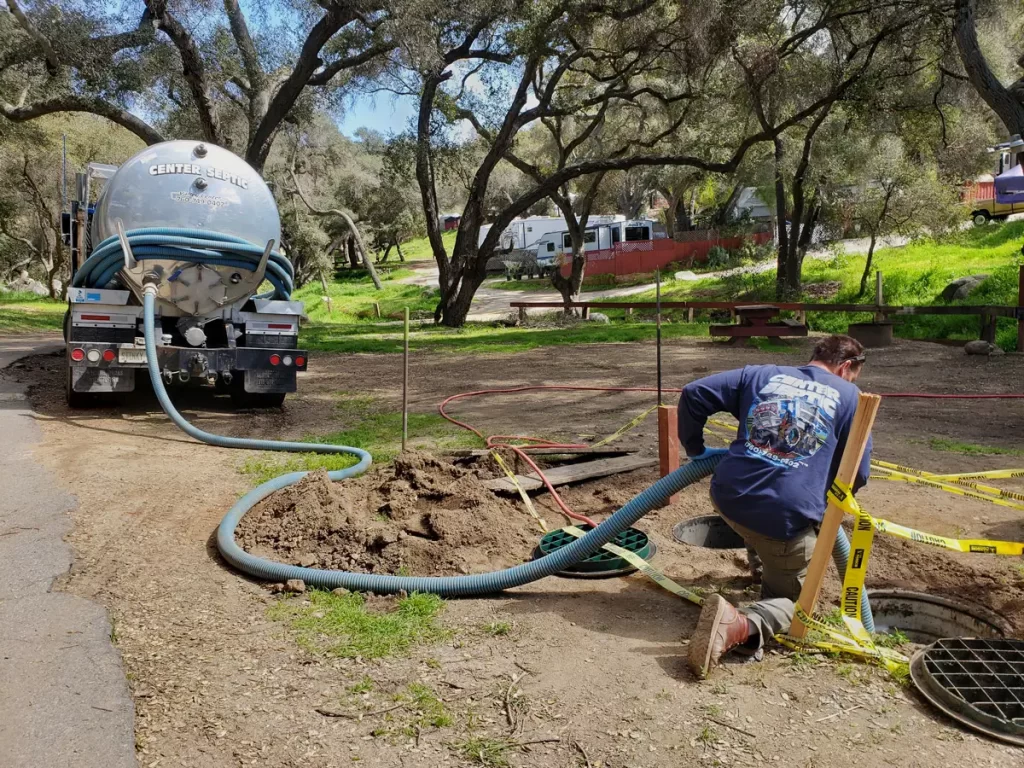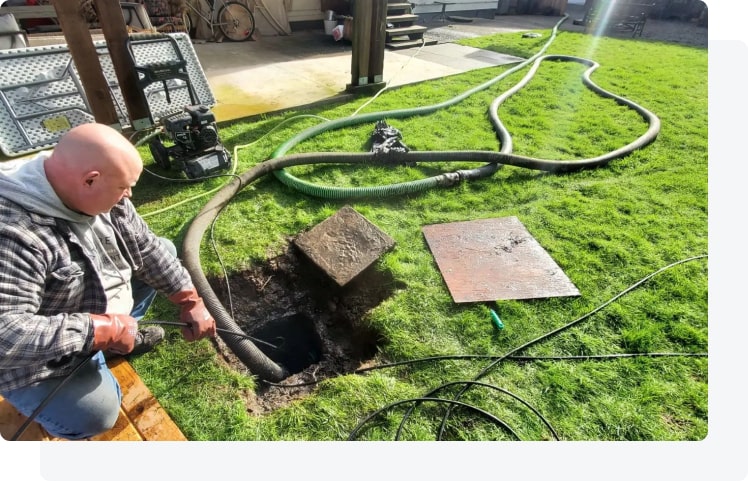With the fall rains approaching, is your septic system ready? Saturated soil from heavy rainfall can make it nearly impossible for your drain field to absorb wastewater properly. When your septic system is clogged or poorly maintained, this can lead to overflows, backups, and even environmental hazards right in your backyard.
Your home is more than just where you live, it’s your biggest asset, and in today’s housing market, who knows if future generations will even have the chance to buy one of their own! Taking care of your home now isn’t just smart, but it’s necessary for protecting what you’ve built for your family. A big part of that is keeping your septic system in check. In this post, we’ll break down how to know if your septic system needs maintenance or repairs, how often you should check it, and what steps you can take to avoid costly problems. Whether it’s backing up, clogging, or simply overdue for a check-up, it’s better to act now before bigger issues arise.
To help you stay on top of your septic system’s health, we’ve created a simple checklist of key things to watch for. By regularly checking these areas, you can catch potential issues early, avoiding bigger problems and costly repairs down the line. Here’s what you need to look out for to determine if your septic system needs maintenance or repairs.
| What to Check | Why It’s Important | How to Identify It |
|---|---|---|
| Slow drains or gurgling sounds | These indicate a blockage or full septic tank, which can lead to backups. Address this promptly to avoid damage to your home’s plumbing
. |
Notice water taking longer to drain or hearing unusual bubbling noises when flushing toilets or draining sinks. |
| Foul odors near drains or outside | Persistent sewage smells inside or around the yard can signal a buildup of waste or a failing drain field
. |
Smell sewage near sinks, toilets, or outside in the yard, especially around the septic system area. |
| Pooling water or wet spots | Standing water or unusually green grass near the septic system could indicate a clogged drain field or an overflowing tank
. |
Look for puddles, soggy spots, or very green, thick grass near the septic system or drain field, even without rain. |
| Sewage backup in the house | This is an emergency and indicates a full or blocked septic tank. Immediate action is required to prevent health hazards
. |
Notice sewage or water backing up into sinks, tubs, or toilets. This is a serious issue that needs immediate attention. |
| Time since the last pumping | If it’s been 3-5 years since the last septic pumping, it’s time for a check-up to prevent overflows and expensive repairs
. |
Check your home maintenance records for the last pumping. If it’s been more than 3 years, schedule a service. |
By regularly checking these signs, homeowners can avoid costly repairs and keep their septic systems functioning smoothly, especially as wet and cold weather approaches. After you’ve gone through the checklist, it’s important to know what tasks you can handle yourself and what requires professional help.
DIY Maintenance: You can easily handle basic checks like monitoring for slow drains, unusual smells, or soggy spots in your yard. Regularly inspecting these areas helps you catch early warning signs before they become bigger issues. You can also avoid overloading your system by being mindful of what you flush and conserving water to reduce strain on your septic system.
When to Call a Professional: For more complex tasks like pumping out the septic tank, conducting thorough inspections of the tank and drain field, or dealing with sewage backups, it’s best to call in a professional. These issues require specialized tools and expertise to ensure the job is done safely and correctly. Attempting to fix these problems without the right experience can lead to costly mistakes or health hazards.
In short, regular monitoring and mindful usage can go a long way, but professional assistance is key when it comes to major maintenance and repairs.
When a professional septic maintenance service comes to your property, there are a few things you can expect. Generally, they will inspect the system to assess its condition, pump the tank, and check the drain field for any signs of trouble. This process ensures your system is working properly and can help prevent costly issues down the road.

What to Expect:
- Inspection and Initial Assessment: The professional will inspect the condition of the tank, pipes, and the surrounding soil. They’ll check for any signs of leaks, cracks, or blockages.
- Pumping the Septic Tank: The main part of maintenance is pumping out the solid waste and scum that have accumulated in the tank. This prevents blockages and backups in the system.
- Drain Field Check: They’ll check the drain field for any signs of standing water or bad odours, which could indicate problems with water absorption.
Common Costs in Nanaimo, BC:
- Septic Pumping: On average, septic tank pumping in Nanaimo and nearby areas costs between $300 to $600, depending on the size of the tank and location.
- Inspections: Septic inspections usually range from $200 to $400, especially if you’re buying or selling a home.
- Repairs: If your system needs repairs, the cost can vary widely depending on the extent of the damage. Minor repairs may start around $500, while more complex issues can cost over $2,000

As the rainy and cold season hits Vancouver Island, now is the perfect time to ensure your septic system is ready to handle the weather. Whether you’re staying in your home long-term or planning to sell, maintaining your septic system protects both your investment and your peace of mind. With heavier rainfall, increased water usage, and freezing temperatures, a well-maintained septic system is essential for avoiding backups, leaks, and costly repairs.
Don’t wait until you’re facing a sewage backup or waterlogged yard. Schedule your septic maintenance today and keep your system running smoothly through the winter. Reach out to our team for professional inspections, pumping, and repairs, we’re here to help keep your home safe and worry-free, no matter the weather.



